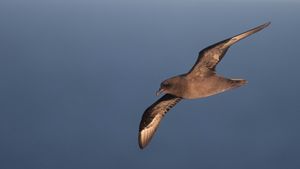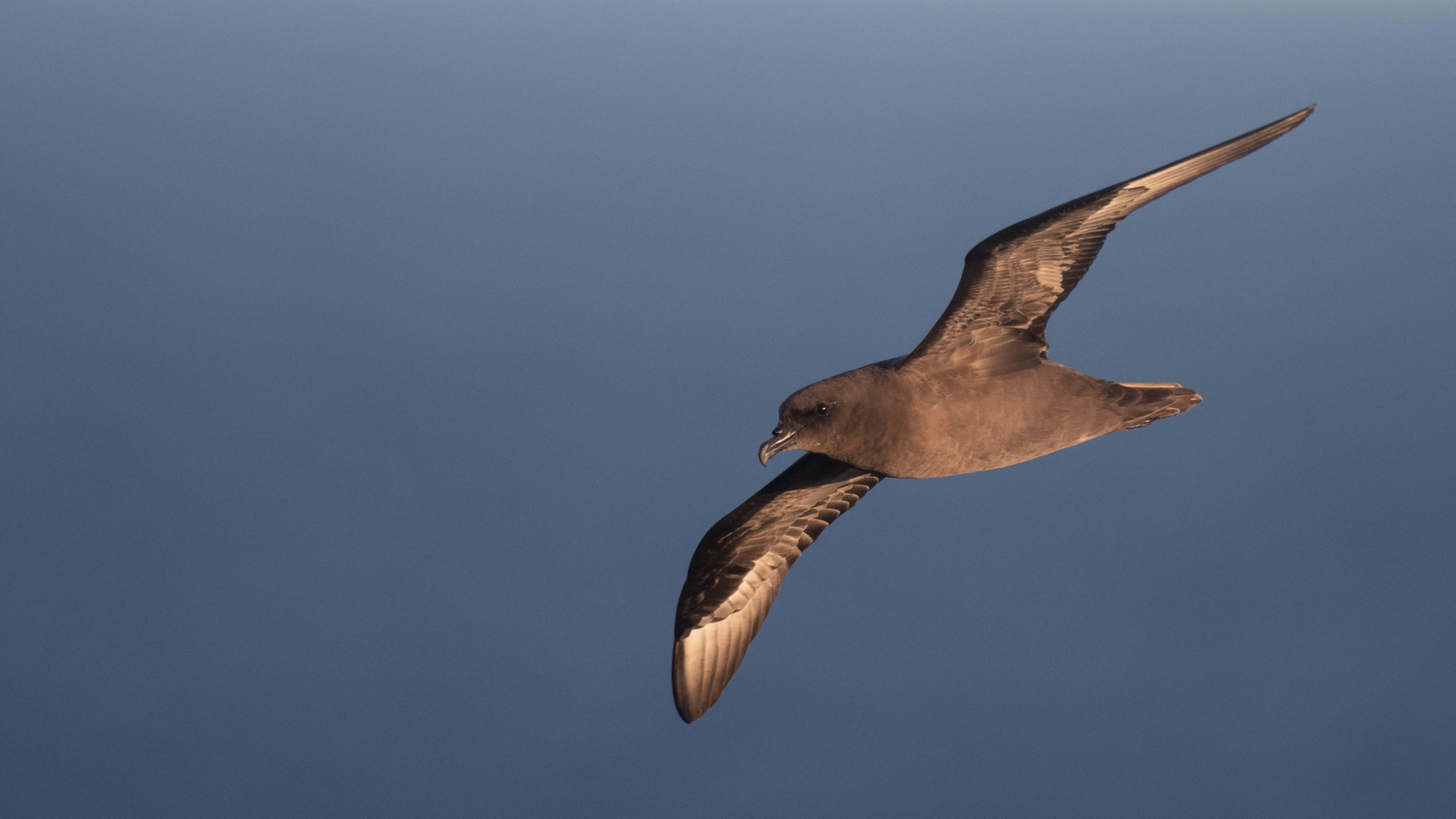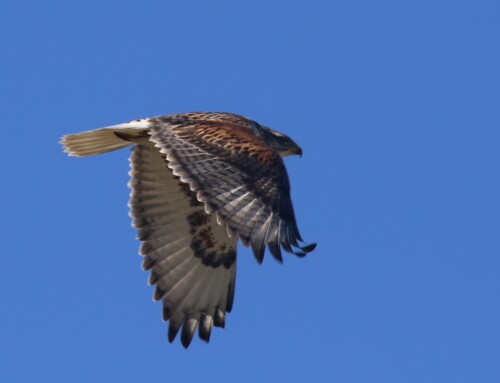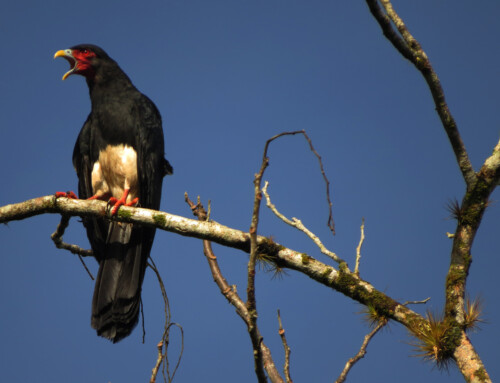 LINKED PAPER
LINKED PAPER
Individual consistency in migration strategies of a tropical seabird, the Round Island petrel. Franklin, K.A., Norris, K., Gill, J.A., Ratcliffe, N., Bonnet-Lebrun, A.S., Butler, S.J., Cole, N.C., Jones, C.G., Lisovski, S., Ruhomaun, K., Tatayah, V. & Nicoll, M.A.C. 2022 Movement Ecology. doi: 10.1186/s40462-022-00311-y VIEW
In recent years, many migratory birds have been reported to arrive earlier and depart later, with some turning up in unexpected places. However, observations from avid birdwatchers and bird ringers have shown that the same individuals are nearly always found in the same place at the same time across a bird’s annual cycle. This spatiotemporal consistency in migratory behaviour is often linked to how well migratory populations will respond to environmental change, with those species showing little or no change being more likely to be in decline (Møller et al. 2008).
Recent advances in remote tracking technology have led to many more studies following the same individuals over consecutive years. These repeated measures of individuals have commonly revealed low within-individual variation in migratory timings and non-breeding locations, but high variation between individuals (Gill et al. 2014; Brown et al. 2021).
Yet many of these studies have been conducted on species breeding at temperate and polar latitudes (reviewed by Franklin et al. 2022), where the emergence and persistence of individual consistency in migratory behaviour may be a result of how predictable the resources are in those environments. Going back to the same location at the same time of year as previously (and surviving) is likely to be much less risky than trying somewhere new! However, tropical oceans are often considered low in productivity and prey abundance and have less predictable food resources (Weimerskirch 2007). So, will consistent individual migratory behaviours occur in tropical systems?
As part of my BOU-funded PhD, we used the Round Island Petrel (Pterodroma arminjoniana) to answer this question. This population of Gadfly Petrels (genus Pterodroma) breeds all-year round on Round Island, Mauritius, in the western Indian Ocean, and has been the focus of a long-term geolocator tracking project. The fact they breed all year-round means individuals can come and go at any time of year, and the mid-ocean location of Round Island means that petrel migrations could potentially occur in any compass direction and for a huge range of distances. Thus, a perfect system to quantify levels of within- and between- individual variation in migratory behaviour!
Multi-year tracking data from 62 individuals between 2009 and 2018 showed petrel migrations to cover different areas across much of the Indian Ocean. Yet individual birds do not simply fly all over this ocean basin. Instead, the same individuals consistently migrated to the same place in consecutive years. For example, some petrels always went north to the Arabian Sea, some east to the central Indian Ocean, or further afield to the western Australian basin. This was repeated even for those which we had four years of tracking data for (Figure 1). When individuals departed closer together in time, they were also more likely to have similar migratory routes suggesting that the conditions at departure can influence where individuals go.

Figure 1 Example tracks of 12 individual Round Island Petrels that have been tracked with geolocators over four (A, B), three (C–E), or two (F–L) migrations. Different migrations are illustrated in different colours. Black diamond indicates the location of Round Island, Mauritius.
We also found high repeatability in petrel migratory timings (arrival to and departure from Round Island), and migration duration (time away from Round Island). Considering it is possible for birds to breed and thus arrive/depart at any time of year (unlike seasonal breeders which are constrained to the different seasons), it is incredible that some petrels arrived and departed within the same couple of days each year (Figure 2).

Figure 2 Dates of migration departure and arrival to/from Round Island of petrels tracked for more than one migration. Dates of the same individual are connected by vertical lines, and individuals are ordered from left to right by increasing mean date for departure and arrival, separately (therefore, individual one for departure is not the same as individual one for arrival).
The small amount of within-individual variation suggests that consistency in migratory behaviours is favoured even in comparatively patchy and unpredictable tropical environments. This consistency, together with the fact that birds can be found breeding on Round Island all year round, means that different individuals are potentially exposed to different environmental conditions and human-associated impacts, with potentially important consequences for breeding success, survival and, ultimately, the status of this population. Determining what is driving the large levels of between-individual variation in this system will be key in revealing the implications of individual consistency for population demography, and the potential consequences of future environmental changes across the Round Island petrel migratory range.
References
Brown, J.M., van Loon, E.E., Bouten, W., Camphuysen, K.C.J., Lens, L., Müller, W. et al. 2021. Long‐distance migrants vary migratory behaviour as much as short‐distance migrants: an individual‐level comparison from a seabird species with diverse migration strategies. Journal of Animal Ecology 90: 1058-1070. VIEW
Franklin, K.A., Nicoll, M.A.C, Butler, S.J., Norris, K., Ratcliffe, N., Nakagawa, S. & Gill, J.A. 2022. Individual repeatability of avian migration phenology: a systematic review and meta-analysis. Journal of Animal Ecology (in press). VIEW
Gill, J.A., Alves, J.S., Sutherland, W.J., Appleton, G.F., Potts, P.M. & Gunnarsson, T.G. 2014. Why is timing of bird migration advancing when individuals are not? Proceedings of the Royal Society B 281: 20132161. VIEW
Møller, A.P., Rubolini, D. & Lehikoinen, E. 2008. Populations of migratory bird species that did not show a phenological response to climate change are declining. PNAS 105: 16195-16200. VIEW
Weimerskirch H. 2007. Are seabirds foraging for unpredictable resources? Deep Sea Research Part II: Topical Studies in Oceanography 54: 211-223. VIEW
Image credit
Top right: Round Island Petrel Pterodroma sp. © Sam Napaul.
If you want to write about your research in #theBOUblog, then please see here.




